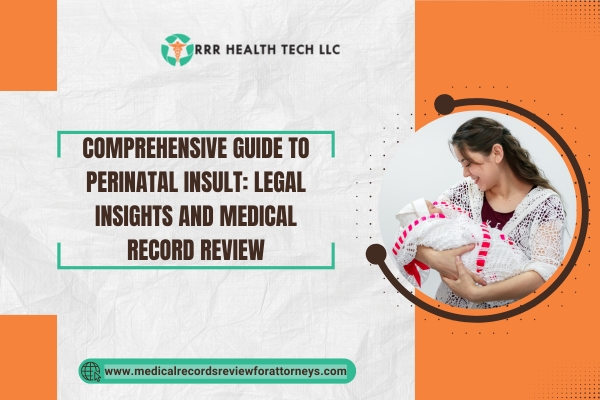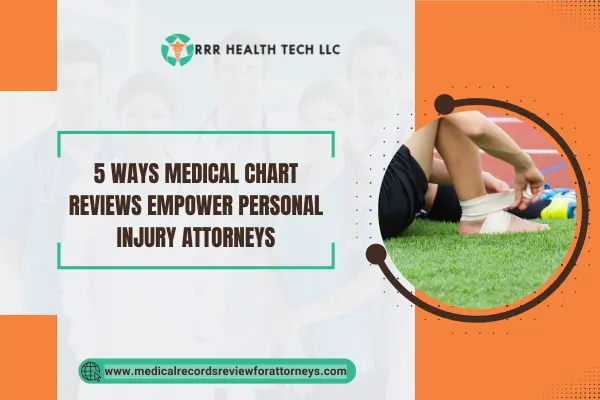
Introduction
An injury to a fetus or a newborn in the time period a few moments before, during and a matter of minutes post a child is born is called perinatal insult. The goal of this writing is to explore the concept of perinatal insult in broad detail and all of its preconceptions along with ways through which fort attorneys and lawyers dealing with such cases can be helped with medical record review services.
Overview of Perinatal Insult
1.1 Definition and Importance
• Definition: Perinatal insult Injury inflicting negative impact on a fetus or a new-born baby that has the likelihood of lasting detrimental consequences impacting their physical and mental well-being is termed as perinatal insult.
• Importance: The point in question which should be “Does understanding the legal aspect surrounding injury cases matter?” Yes it does and it is fundamental for practicing lawyers within injury law as it poses an immense challenge for families dealing with such trauma post injury cases due to its intricate nature.
1.2 Key Statistics
- In the United States, perinatal injuries have an approximate occurrence of 1 out of every 1000 child births.
- Causative factors leading to injuries to a newborn grounded on insults inflicted during pregnancy often take the form of paralysis which is estimated to impact 1 child out of every 323.
Causes of Perinatal Insult
2.1 Hypoxia and Birth Asphyxia
• Definition: A state where there is a lack or extreme shortage in oxygen is termed as hypoxia while any form of difficulty in breathing during the process of childbirth is referred to as birth asphyxia.
• Placental Abruption: The early separation of a placenta may impede oxygen supply.
• Delayed C-Section: Oxygen deprivation may result from the failure to easily administer a cesarean delivery.
2.2 Traumatic Birth Injuries
• Physical Trauma: Delivering a baby is a physically complicated procedure that can lead to severe injury if implemented inappropriately.
• Common Issues:
• Excessive force used with tools such as forceps and vacuum extractors can result in skull fractures or nerve damage.
• Shoulder Dystocia: Improper techniques may lead to Brachial plexus injuries.
2.3 Maternal infections
• Impact: Severe complications may arise if proper and adequate therapy is not administered.
• Examples:
• Group B Streptococcus- GBS carries the risk of leading to sepsis and brain damage.
• Chorioamnionitis- Infection of fetal membranes might come with dire consequences.
2.4 Medication and Anaesthesia Errors
• Risks: Negative outcomes may arise if proper considerations are not taken into account during labor medication.
• Common Issues:
• Mismanagement of epidural procedures can lead to low blood pressure and deprive the brain of oxygen.
• Overuse of labor inducing drugs may lead to numerous issues.
Signs and symptoms of perinatal insults
3.1 Immediate Symptoms
• Signs of respiration distress at birth.
• Floppy muscles or rigid ones indicating potential issues.
3.2 Delayed Symptoms
• Seizures from an indication of possible damage to the brain.• Developmental Delays: In speech or movement, the individual is behind at an age appropriate level.
Long Term Effects of Perinatal Trauma
4.1 Neurological Disorders
• Cerebral Palsy: Movement and coordination impairment.
• Intellectual Disabilities: Deficits of thought and increased difficulty with learning tasks.
4.2 Behavioural and Emotional Disorders
• Increased Risk: ADHD and other disorders on the autism spectrum.
4.3 Lifelong Care Needs
• Support: On-going medical attention and tailored schooling are important for lots of young people.
Legal Consequences alongside Analysing Medical Documents
5.1 Establishing Professional Negligence
• Not Having a Watchful Eye on Fetal Discomfort Signals: Must be done vigilantly to avoid possible damage.
• Unnecessary Delayed C-Section: A process that is needed to be proven in negligence cases.
5.2 Significance of Medical File Analysis
• Importance: Strong cases depend greatly on having accessible medical records for scrutiny to put together useful evidence.
• Steps:
• Evidence Gathering: Collection of fetal monitoring documentation and securing of expert testimonies.
• Hospital Record Examination: Gleaning gaps in care provision.
Case Studies
6.1 Case Study 1: Hypoxia Leading to Cerebral Palsy
• Overview: An infant experienced hypoxia secondary to complications with the umbilical cord.
• Challenges: Defending the claim of negligence through not monitoring fetal distress signals.
• Solutions: Medical record review demonstrated failure to act on abnormal heart rates.
6.2 Case Study 2: Traumatic Birth Injury
• Overview: A Child sustained brachial plexus injury at delivery.
• Challenges: Proving the misuse of the delivery apparatus.
• Solutions: Testimony from experts substantiated claims of excessive force.
Conclusion
Lawyers dealing with families facing these circumstances need to understand the perinatal insult injury. Utilizing available services such as a review of the medical file enables the lawyer to construct a more solid case and advocate for their clients.


